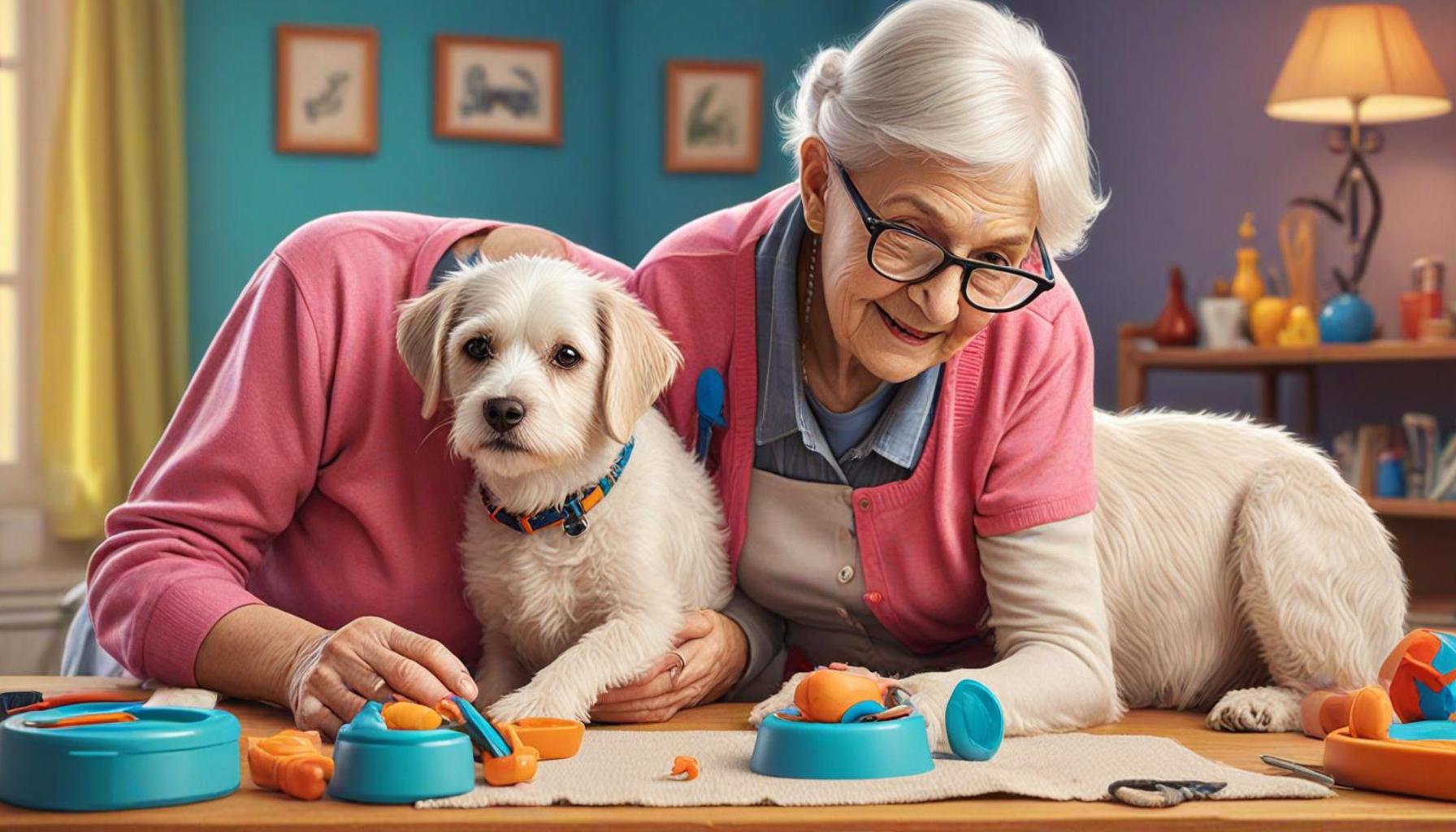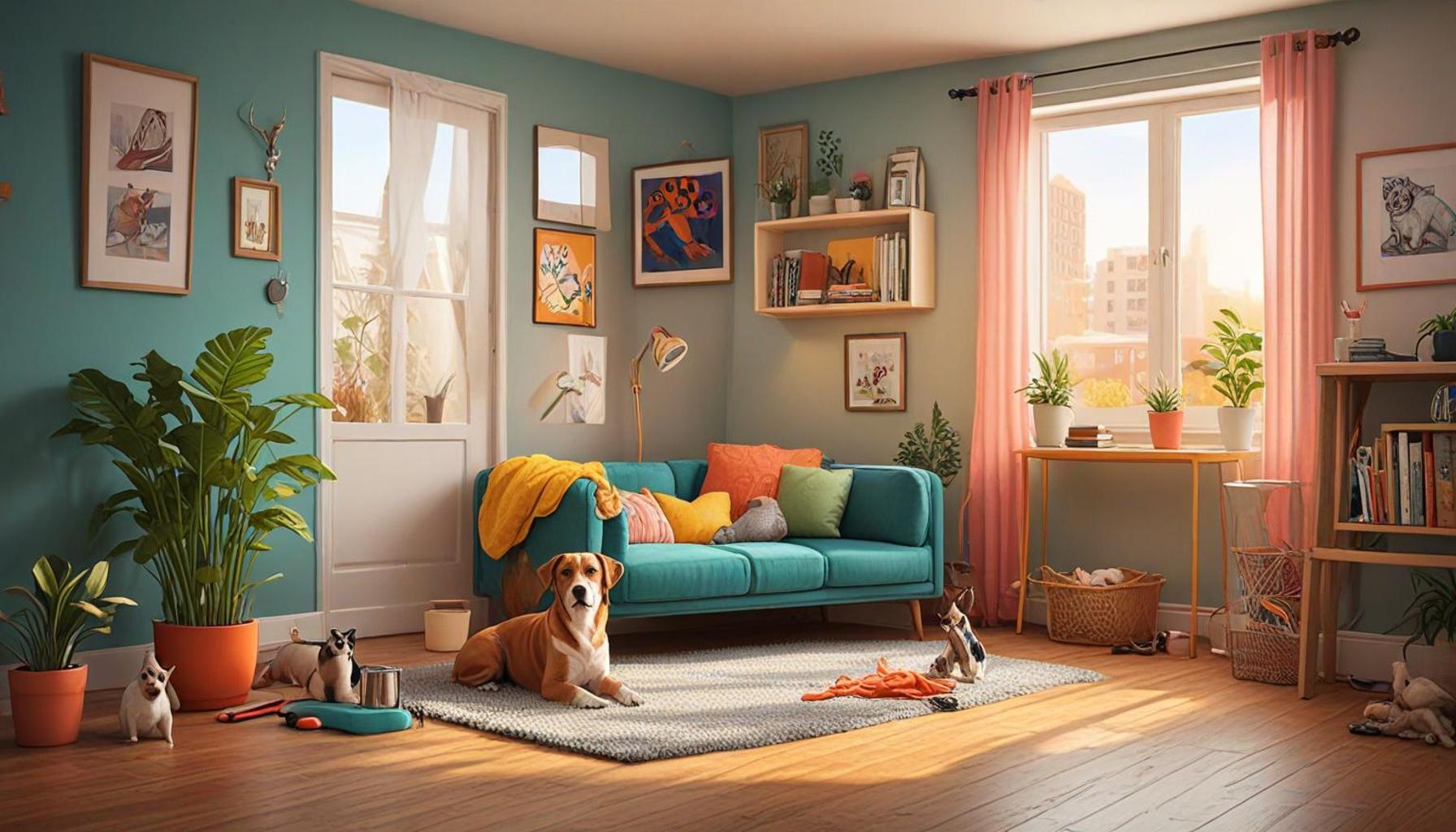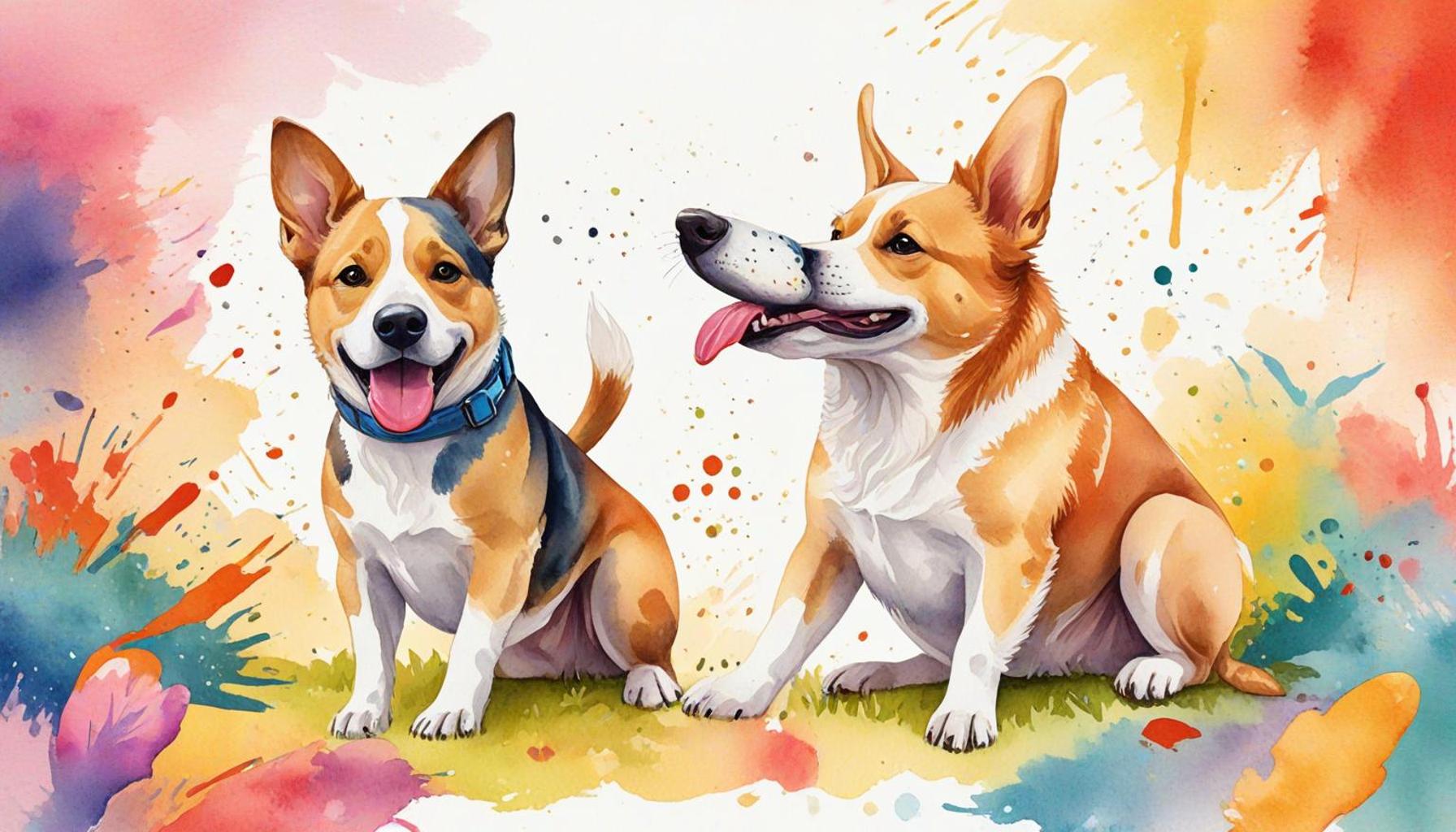Pet Training for Seniors: Adapting Techniques for Special Needs

Understanding the Importance of Pet Training for Seniors
The bond between seniors and their pets can bring immense joy and companionship, enhancing emotional well-being and reducing feelings of loneliness. However, training pets under the guidance of older individuals requires special consideration to accommodate their unique abilities and limitations. By adapting training techniques, we can significantly improve the experience for both seniors and their furry friends, allowing a deeper, more meaningful connection to flourish between them.
Key Considerations in Senior Pet Training
In order to create effective training strategies tailored for older adults, several crucial factors must be taken into account:
- Cognitive Abilities: Many seniors experience memory impairments or slower cognitive processing. Therefore, it is beneficial to use simple commands and break down tasks into smaller, achievable steps. For instance, instead of training a dog to “sit,” one could simply start with the cue “sit” followed by an immediate reward. Repetition and consistency are key, as they help reinforce memory and understanding.
- Physical Limitations: Seniors may face various physical challenges such as arthritis or reduced mobility. Training sessions should avoid rigorous physical activities that could cause strain, opting instead for gentle, low-impact exercises that foster engagement without risking injury. For instance, teach dogs commands while seated, allowing seniors to remain comfortable while still participating in the training process.
- Communication Style: Effective communication is vital in ensuring training success. Utilizing clear, concise verbal commands enhanced by visual cues or hand signals can significantly aid comprehension. For example, pairing the word “come” with a hand motion, such as waving, can help reinforce the command and provide visual guidance, making it easier for seniors to engage and interact with their pets.
Furthermore, selecting the right pet is crucial. For seniors, smaller, more manageable animals such as smaller dog breeds or cats may be preferable. These pets require less physical exertion, making the training process smoother and more enjoyable.
Benefits of Tailored Training Techniques
Implementing customized training techniques provides numerous advantages:
- Owners feel empowered and confident, allowing them to take a more active role in their pets’ lives.
- Pets develop improved behavior and social skills, enhancing safety in public spaces and ensuring a harmonious coexistence at home.
- Stronger emotional bonds emerge, enriching the lives of both seniors and their pets, in turn promoting mental wellness and reducing feelings of isolation.
As we explore adaptable training methods across various contexts, we unlock transformative possibilities that can elevate the quality of life for seniors and their animal companions alike. The approach to training can be varied, including online resources, local pet training classes, or even community programs that emphasize the well-being of both pets and the elderly, thus paving the way for a fulfilling relationship between the two.
LEARN MORE: This related article may interest you
Strategies for Effective Pet Training for Seniors
When it comes to pet training for seniors, employing a holistic approach is vital for success. The process should focus not just on the animal’s behavior but also on the dynamics of how seniors can best connect with their pets. Understanding these dynamics leads to enriching interactions that enhance both mental and physical well-being. This section delves into specific strategies that are adaptable for seniors, taking into account their unique needs while fostering positive outcomes for their pets.
Establishing a Routine
Creating a regular training schedule instills a sense of predictability and security for both the senior and the pet. Routines cater to the memory aspects of training, providing structure that helps seniors remember commands and techniques. Consistency is crucial in reinforcing learned behaviors. For instance, setting aside the same time each day for training sessions, even if brief, ensures that the pet is conditioned to respond to cues during those specific periods.
Positive Reinforcement Techniques
Utilizing positive reinforcement is particularly effective for seniors and their pets. Techniques such as treats, praise, or gentle petting serve as motivational tools. Dogs, for instance, respond well to verbal affirmations or small training treats. In Nigeria, locally sourced dog treats like fish or small pieces of meat can also be used, making reinforcement both engaging and culturally relevant. This approach not only encourages good behavior in pets but also boosts the confidence of seniors as they witness their success.
Techniques for Limited Mobility
For seniors with mobility challenges, adapting training sessions to their capabilities is essential. Use a few simple techniques that involve minimal physical strain:
- Use of Interactive Toys: Engage pets with toys that can be used from the comfort of a chair or sofa, allowing seniors to participate in play and training without excess physical demands.
- Short Training Sessions: Keep training durations brief—around 5 to 10 minutes—to prevent fatigue and maintain enthusiasm. Frequent, short sessions can be more beneficial than longer ones.
- Incorporate Technology: Utilize apps or devices that assist in training. For instance, smartphone apps can provide reminders for training commands or offer insights on pet behavior, keeping seniors in the loop without needing extensive physical effort.
By implementing these tailored strategies, seniors can enjoy a fulfilling interaction with their pets. The key lies in being adaptive and flexible, ensuring that the process is both enjoyable and effective. Such training does not only cultivate a better-behaved pet but also enriches the lives of seniors, affirming the vital role pets play in their emotional and social well-being.
| Category | Advantages |
|---|---|
| Flexible Training Techniques | Adjustments in training can cater to specific needs, ensuring comfort and ease for both the pet and the owner. |
| Positive Reinforcement | This approach enhances bonding, leading to a more trusting relationship between the senior and their pet. |
| Tailored Health Considerations | Special techniques take into account physical limitations, ensuring safe training sessions. |
| Enhanced Communication | Adapting methods fosters better understanding of signals between seniors and their pets. |
Incorporating the right training methods can dramatically improve the experience for seniors and their pets. It creates an environment where animals can thrive despite any special needs they may have, reflecting the unique bond that blossoms through sensitive training practices. The emphasis on positive reinforcement not only motivates pets to learn but also fosters a deeper connection. This connection is vital, especially for seniors who may face isolation; having a responsive pet alleviates loneliness. Furthermore, adaptations in technique based on health considerations, such as mobility issues, allow for a safe and enjoyable training experience, enhancing the pet’s wellbeing while also ensuring seniors remain active participants. Adopting these tailored training methods ultimately leads to a more harmonious relationship, enhancing the quality of life for both pets and their owners, and creating enriching experiences that are beneficial for all involved.
LEARN MORE: This related article may interest you
Enhancing Connection through Sensory Engagement
One of the key elements of pet training for seniors lies in fostering a strong bond between the pet and the owner. This bond can be significantly enhanced through sensory engagement, which stimulates not just the pet’s mind but also provides enriching experiences for seniors. Engaging multiple senses can lead to more profound interactions, allowing both parties to communicate more effectively.
Utilizing Aromatherapy and Familiar Scents
For seniors, especially those with diminished mobility or cognitive functions, using familiar scents can be a powerful tool in training. Aromatherapy can be incorporated into training sessions by using specific scents that pets associate with positive experiences. For instance, lavender or chamomile is known to have calming properties. A calming atmosphere can help pets focus during training sessions, while soothing the senior pet owner. Seniors can even carry items like a favorite blanket or shirt that holds the pet’s scent, as this can create a comforting environment, making the training feel more secure and familiar.
Incorporating Visual Stimuli
Visual aids can also enhance pet training for seniors. Using brightly colored toys or utilizing visuals such as charts or posters with commands printed in large fonts can help seniors internalize training cues. Visual prompts can serve as friendly reminders which reinforce memory retention during training. For example, seniors can use a vibrant poster featuring commands like “sit” or “stay” and place it within their line of sight during training sessions, all aimed at maximizing engagement and effectiveness.
Reducing Noise Distractions
One often-overlooked aspect in pet training involves managing the noise levels in the environment. Varied sounds from traffic, television, or household commotion can lead to distractions affecting both the pet’s focus and the senior’s ability to concentrate. Creating a quiet training space can significantly enhance the training experience. This can be as simple as training during quieter times of the day or using soundproof barriers, if available, to mitigate disruptive noise. This fosters an atmosphere where both the senior and pet can thrive.
Simplifying Commands and Communication
Seniors may benefit from simplifying communication during pet training by utilizing fewer commands and incorporating hand signals along with verbal cues. Reduced verbal complexity fits well with cognitive limitations some seniors may encounter and helps pets respond more effectively. A clear, unified system of commands—such as the use of a hand signal paired with a verbal command—can lead to quicker understanding and compliance from the pet, reducing frustration for both parties. An example would be using an open hand gesture for “come” while gently saying the command. This twofold approach reinforces learned behavior while providing clarity.
These techniques not only make training more practical for seniors but also cater to improving their interactive experiences with their pets. By employing sensory engagement strategies, simplified communication methods, and proactive adjustments to training environments, both seniors and their pets can benefit greatly, forging deeper connections that enhance their relationships while promoting effective training. This is particularly significant in contexts such as Nigeria, where the bond between pets and humans can profoundly influence well-being amidst causal cultural shifts.
SEE ALSO: Click here to read another article
Conclusion
As we’ve explored in this article, pet training for seniors involves unique challenges and opportunities that necessitate a tailored approach. By recognizing the distinct needs of senior pet owners and adapting training techniques accordingly, we can significantly enhance the human-animal bond. Strategies such as incorporating sensory engagement through familiar scents and visual stimuli, managing noise distractions, and simplifying communication not only facilitate effective training but also cater to the seniors’ emotional and cognitive well-being.
Moreover, these techniques are particularly relevant in Nigeria, where pets are increasingly seen as family members. The cultural shift towards recognizing the importance of pet care highlights the need for adaptable training methods that resonate with the local context. With each command learned and each strengthened connection, both seniors and their pets can experience remarkable improvements in their daily lives, characterized by trust and companionship.
As society becomes more aware of the special needs of aging pet owners, it is crucial to advocate for resources, community support, and educational programs that empower this demographic in their journey of pet ownership. The relationship forged between seniors and their pets is invaluable; enhancing this bond through appropriate training techniques can lead to enriched lives for both, fostering a harmonious existence that is beneficial to all. As we continue to evolve and learn in the world of pet training, let’s prioritize these adaptations to create a nurturing environment for our beloved animals and their senior caretakers.


